Here's another retrocomputer article: the repair of a Commodore 16. Sifting through Facebook Marketplace, I was struck by this listing for a used, non-working Commodore 16. The price was good, precisely because the computer had problems. According to the seller, the power supply was damaged: he could not repair it, so he sold the Commodore 16, with its accessories, at a low price.

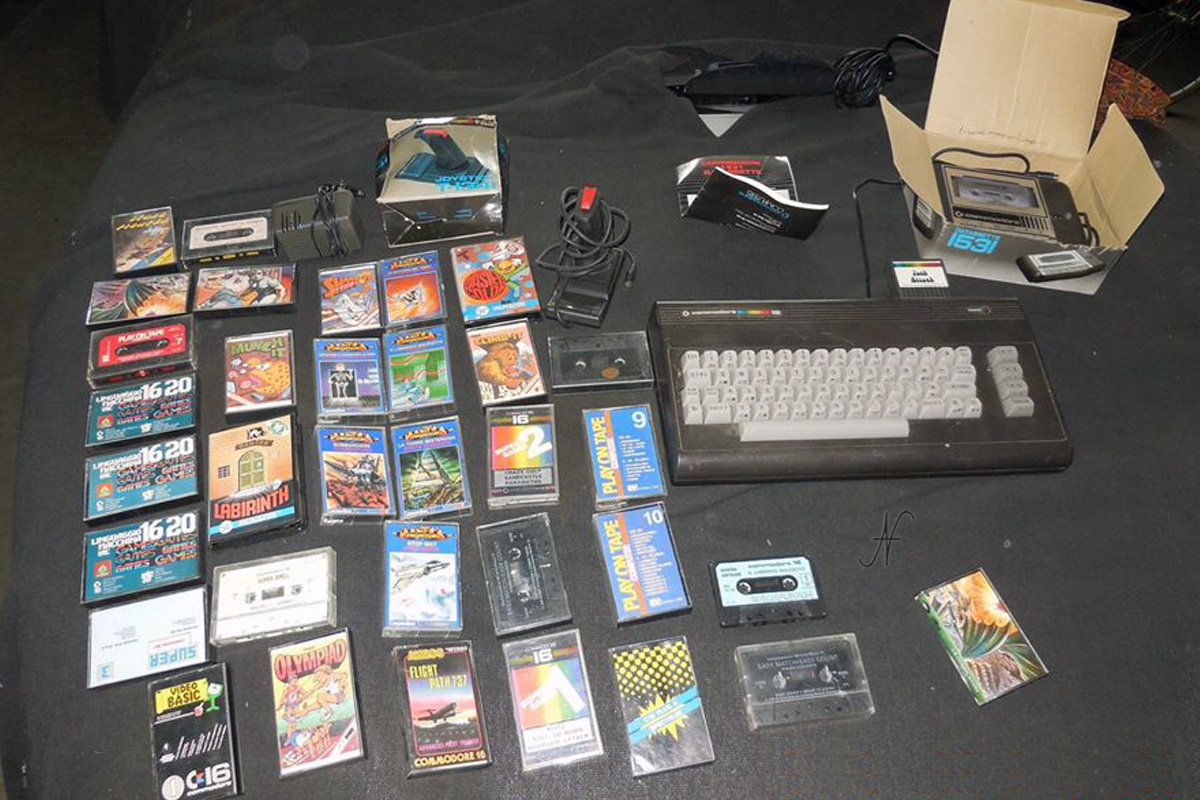
I therefore decided to buy the lot consisting of: Commodore 16 with power supply to be repaired, original joystick, cassettes with games and Datassette 1531 cassette player. When I received the Commodore, I immediately went to work. The computer looked very good, even though it was definitely dirty. The power supply was disassembled: it was enough to reassemble it to make it work. But unfortunately, the Commodore 16 was not working!
Brief history of the C16
The Commodore 16 was marketed by CBM (Commodore Business Machines Inc.) in 1984. It was the cheap alternative to the Commodore 64, which I will discuss in another article and on which I have done several experiments.
You can actually see the economy of the computer from some circuit solutions adopted:
- the absence of a SID chip (audio chip);
- a smaller amount of RAM than the C64 (16kB RAM total, of which 12277 free at power on);
- a linear power supply of inadequate power, with resistor R10 to help and lack of filter capacitors.
The C16 used a CPU signed MOS 7501 which, subsequently, was updated with the most recent MOS 8501 (the one present in the computer I repaired). Unfortunately, the Commodore 16 did not meet the public's favor, so much so that production ceased the same year.

Commodore 16 Repair
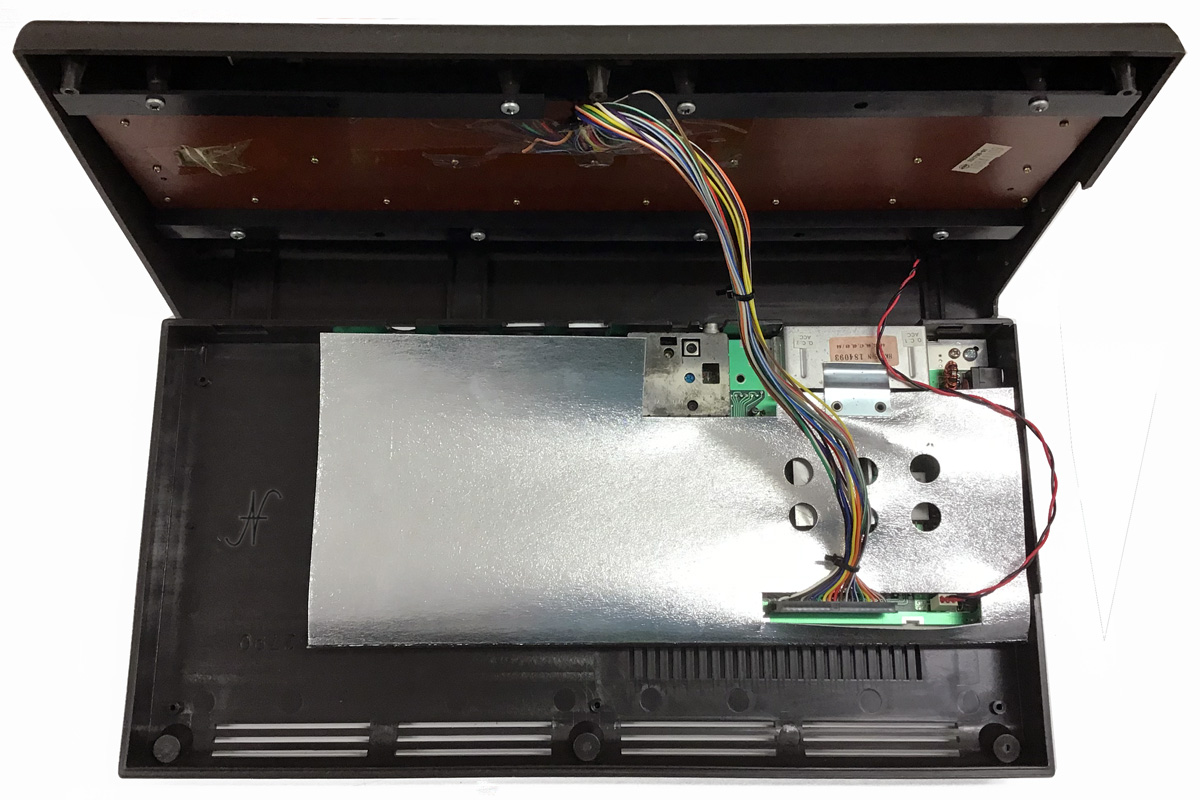
Returning to the repair, I opened the Commodore's chassis and disassembled all the internal components. I realized that the fuse on the motherboard was blown. Having no fuses of that size (6.3 × 32), I used a 5 × 20 fuse, of the same amperage as the original one. I also inserted a filter capacitor, since I realized that the power supply on the motherboard did not have one.
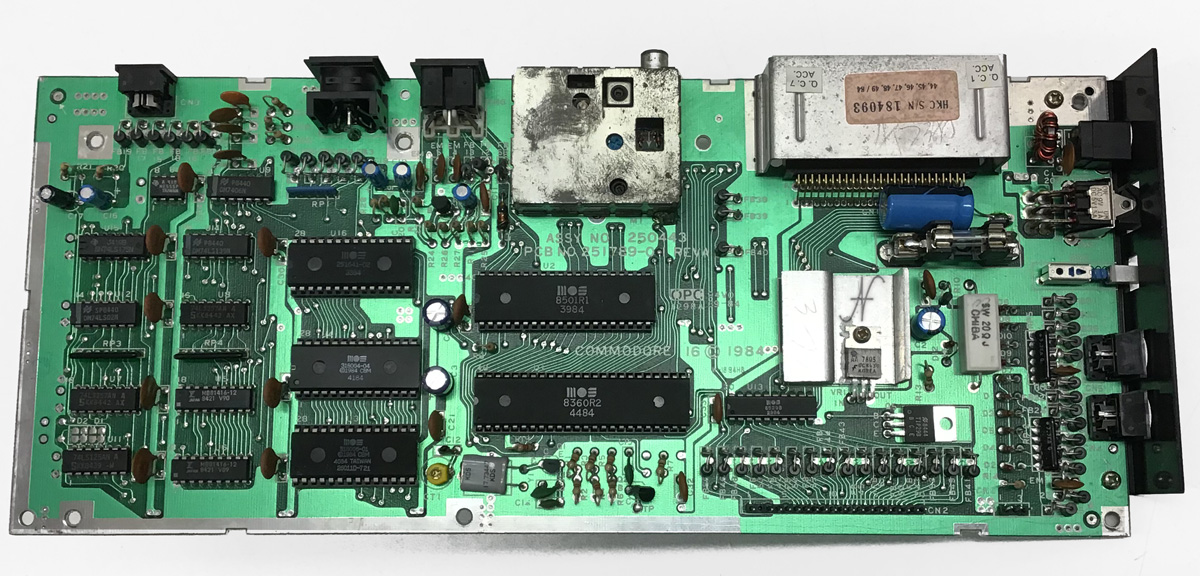
With these simple interventions, the Commodore 16 repair was successful and the computer immediately started working. I then dedicated myself to the complete cleaning of the chassis and keyboard.
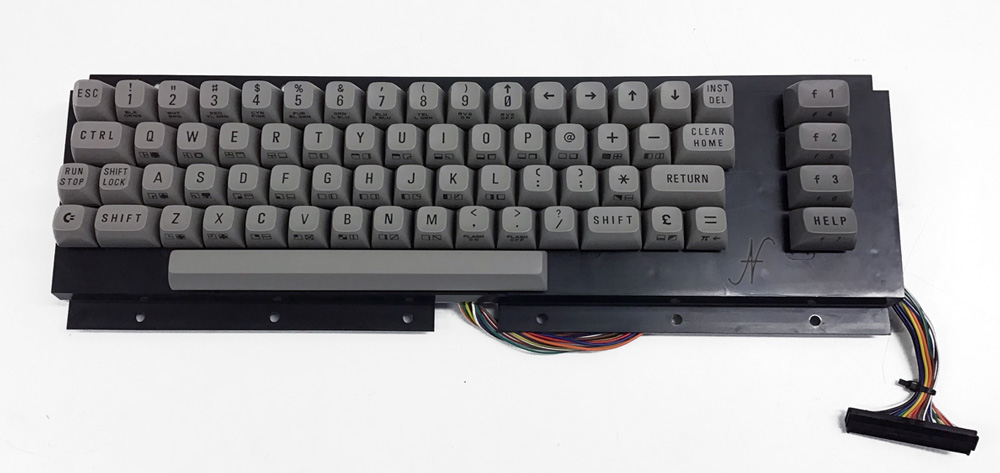
Commodore 16 recapping
I performed a full recapping of the Commodore 16. I replaced all the electrolytic capacitors: both those of the power supply and those of the motherboard. In fact, electrolytic capacitors tend to degrade with the passage of time: losses increase, capacity tends to go out of tolerance and some capacitors even go into short circuit.
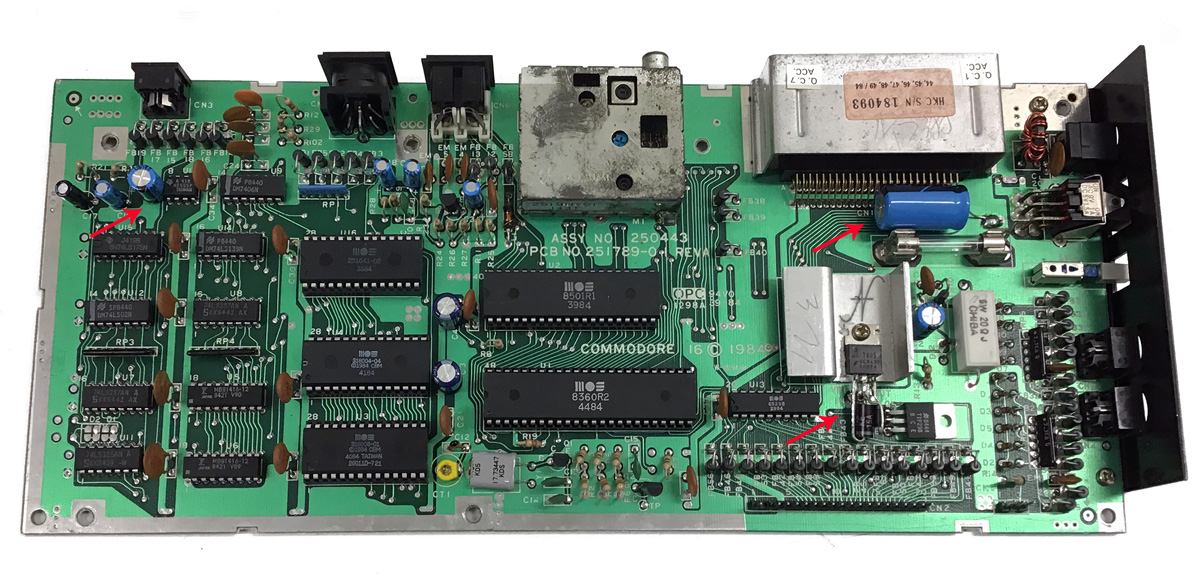
In addition to replacing the capacitors already present on the motherboard, I also added a couple of capacitors which were, in my opinion, missing. The first (top right in the photo) I mounted at the input of the linear voltage regulator uA7805, in order to compensate for any voltage fluctuations. It is a 1000uF capacitor, minimum 25V, in my case 50V. I inserted the second capacitor at the output of the regulator, on the 5V line (see top left in the photo). The value of the second capacitor is 220uF, minimum 16V: I used a 25V one.

Regarding the original capacitors, I made some changes (optional):
- C2, initially from 47uF, is now from 220uF, minimum 16V;
- C3, initially from 10uF, now it is from 100uF, minimum 16V;
- C4, initially from 10uF, is now from 100uF, minimum 16V.
This change serves to increase the immunity of the computer to any sudden drops in voltage.
Warning! The capacitors are polarized, which means that the positive pole must not be inverted with the negative!
Protection of the Commodore 16 from voltage transients
Finally I protected the motherboard and the external power supply with some transil (on the 9V and 5V direct current lines) and with a varistor on the primary of the 230Vca transformer. The transil before the regulator is a 1.5KE15A. The one after the regulator, on the 5V line, is a P6KE6V8A. Again, care must be taken! Transils are polarized, so they must be welded in the correct orientation! The varistor on the primary of the 230V transformer is a SIOV S10K250.

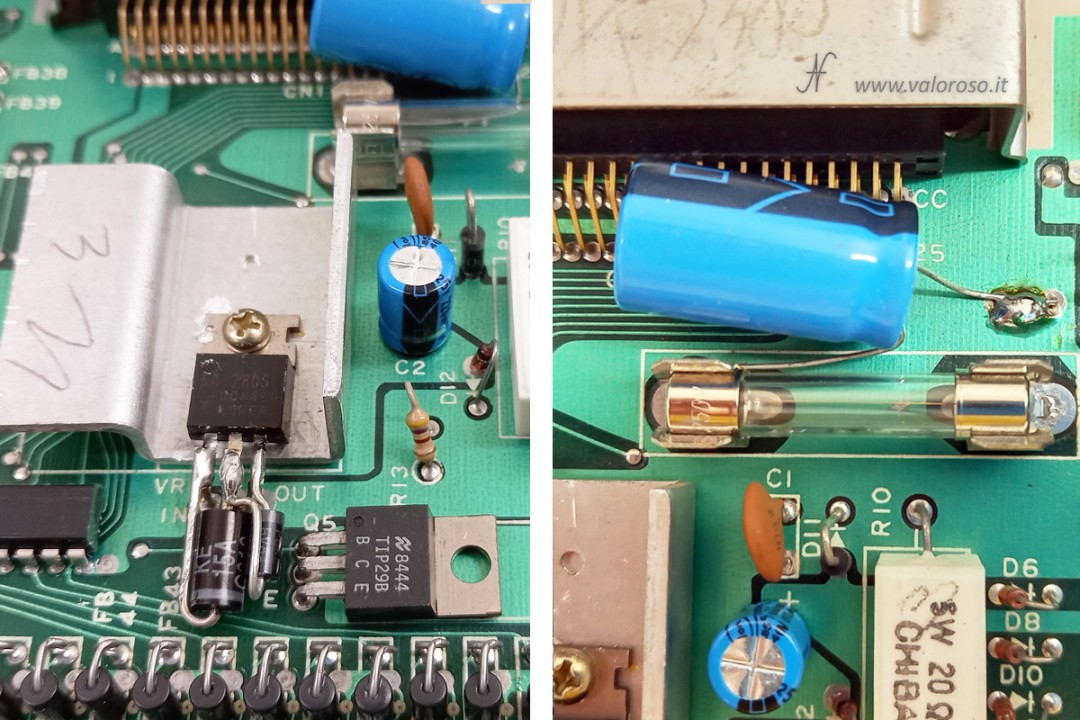
The transils and the varistor are tasked with protecting the Commodore 16 from surges and voltage transients.
After all these repairs and renovations, the Commodore 16 is ready to run for another 40 years!
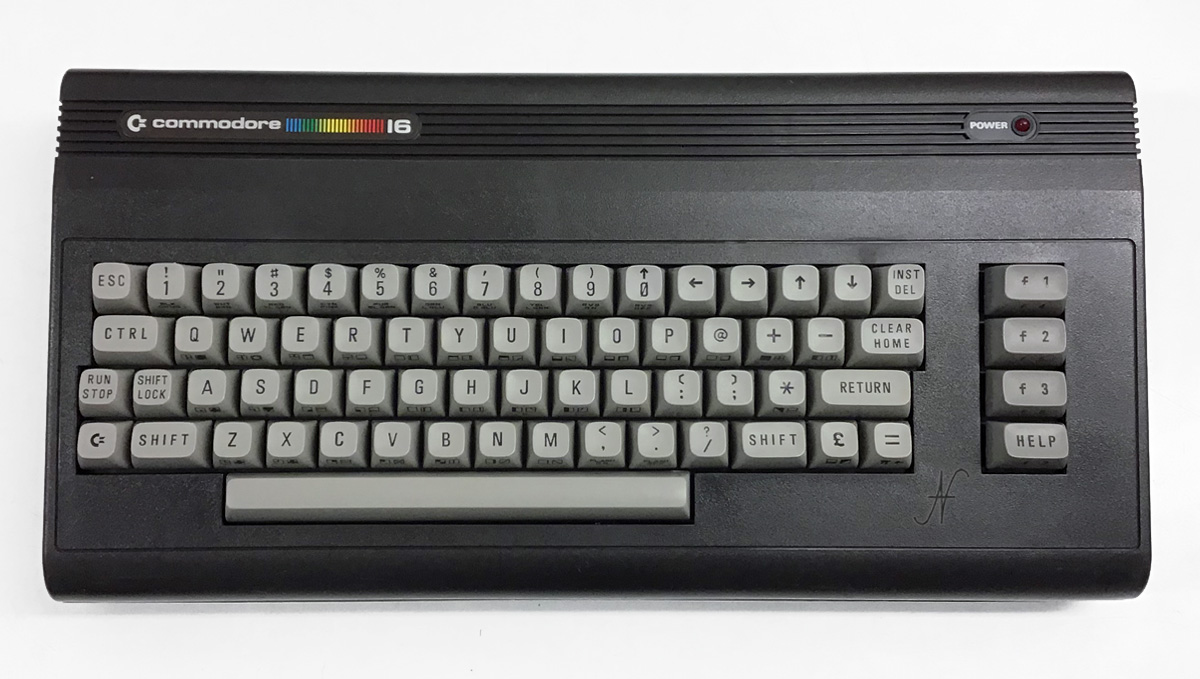
Documentation
In support of this article, I also attach the Commodore 16 Service Manual. It is a technical manual useful for understanding the operation of the Commodore 16 circuits and can be useful for carrying out repairs.
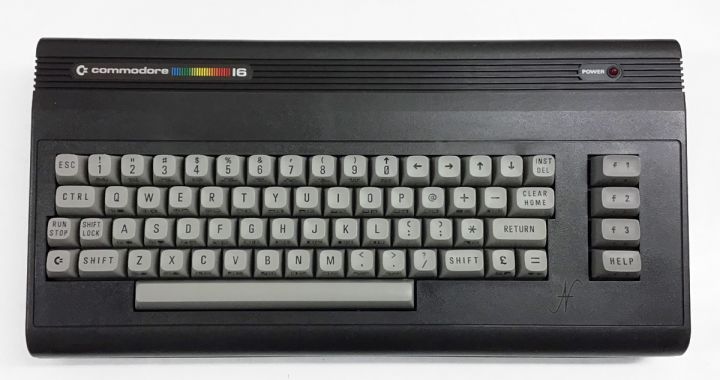
Hi Amedeo
Congratulations on this guide and thank you for the passion you put into it.
I am in the process of restoring a used commodore 16 I wanted to ask you about the (add-ons) you used in yours described in this guide and the values. Thanks in advance
Hi Sebastiano and thanks for the comment!
Taking advantage of your report, I proceeded to modify the article, including the components also in the text.
Here is the list of add-ons.
Varistor on the primary of the 230V transformer:
SIOV S10K250
Transil ropo the regulator (on the 5V line):
P6KE6V8A
Transil before regulator:
1.5KE15A
Capacitor on the 5V line:
220uF minimum 16V, in my case 25V
Condenser before regulator:
1000uF minimum 25V, in my case 50V
See you soon!
Hi Amedeo,
I managed to find a person who will make me the Recap of the C16 but I should explain in detail where to place the add-ons you used for your "mod", the two capacitors and the transils. The 220uF capacitor is placed at 2 empty pads there in the area but are connected just the passers-by or how, the positive in the upper pad side connectors?
The 1000uF capacitor instead seems radial to me (not axial as for the C64) but apart from that the positive is connected on those 3 pads on the right all together and the negative where?
For transils instead cut the line IN to the left before the regulator and make a bridge with 1.5KE15A (positive card side, negative regulator side) and then cut the OUT line to the right of the regulator and make a bridge with P6KE6V8A (positive regulator side, negative card side), I do not understand from the photo if the line in the center of the regulator remains intact?
For the transformer instead I use a non-original 9V stabilized with inverted poles, can I continue to use it or does the mod provide that you must necessarily use the modification also on the original transformer?
In case you can take more detailed photos? thank you very much and congratulations also for the youtube channel!
Hello Nicola. Thanks for the compliments. The modification is not invasive: there are no tracks to cut or holes to drill. The 220uF capacitors are placed in correspondence with the empty pads, exploiting the existing holes (which open by sucking the tin, if they were closed). The 1000 uF is radial, because I already had it that way. You can also use an axial one, if you prefer. The negative is grounded, while the positive is at the power input of the voltage regulator 7805. For transils, they are parallel to the power lines, without cutting anything. They are connected to the feet of the regulator, in parallel. Pay attention to the white bands on the transils, as they are polarized. Attention! If your technician is experienced, he knows how to install the changes! The article is a bit technical, but, if one knows what he is doing, the instructions are clear. Do not take an improvised technician, otherwise you run the risk of doing damage! The stabilized transformer, as you say, is fine. The changes, which I suggest in this article, serve to better protect the C16 and are good for both original and competitive power supplies. PS: I don't think I have more detailed photos. Generally, I already publish those that have come better.
Thanks Amedeo for updating the images, now you understand well where and how to intervene, I correct my previous comment saying then that the 1000uF capacitor has the NEGATIVE connected on those 3 pads on the right and the positive in practice welded on the output fuse holder as clearly now you see from the new images.
I would add for completeness that the additional 220uF capacitor at the top left next to the 555 must be inserted with the positive at the top, exactly like the C2 that you see well in the photo.
Speaking of C2, the diagrams and on my C16 this capacitor is 47uF while from the photos of your recap I seem to see that it is 220uF, am I wrong? is it okay anyway?
Hello Nicola. To study the recap and positioning of transils, I started from the schemes in the service manual, which you can find here: https://www.valoroso.it/wp-content/uploads/Commodore-16-service-manual.pdf
You can see that capacitor C2 is placed just after the output of the voltage regulator. 47uF is a bit low, considering the absorptions involved. For this, I increased the value to 220uF. The same goes for C3 and C4, now 100uF. These changes are optional, you can also keep the original values.
Good evening Amedeo,
I'm subscribed to the channel and I always follow you willingly, I have a C16 with a black screen.
I'm not an electronics expert and I don't have an oscilloscope, I would like to know how I can test (without a forklift) Ted, pla, CPU... But I have 🙂 a tester
Thank you and congratulations for your videos and clarity!
Leonardo
Good evening. Thank you very much! In reality, one tester may not be enough. With the tester he can see if the supply voltage reaches the various chips. Starting with the wiring diagrams, which you can find at the bottom of the C16 page of my collection (https://www.valoroso.it/commodore-16-computer/) you have to follow the signals and clocks. An oscilloscope or frequency meter can help. However, having a working computer to swap chips helps save hours and hours of work!